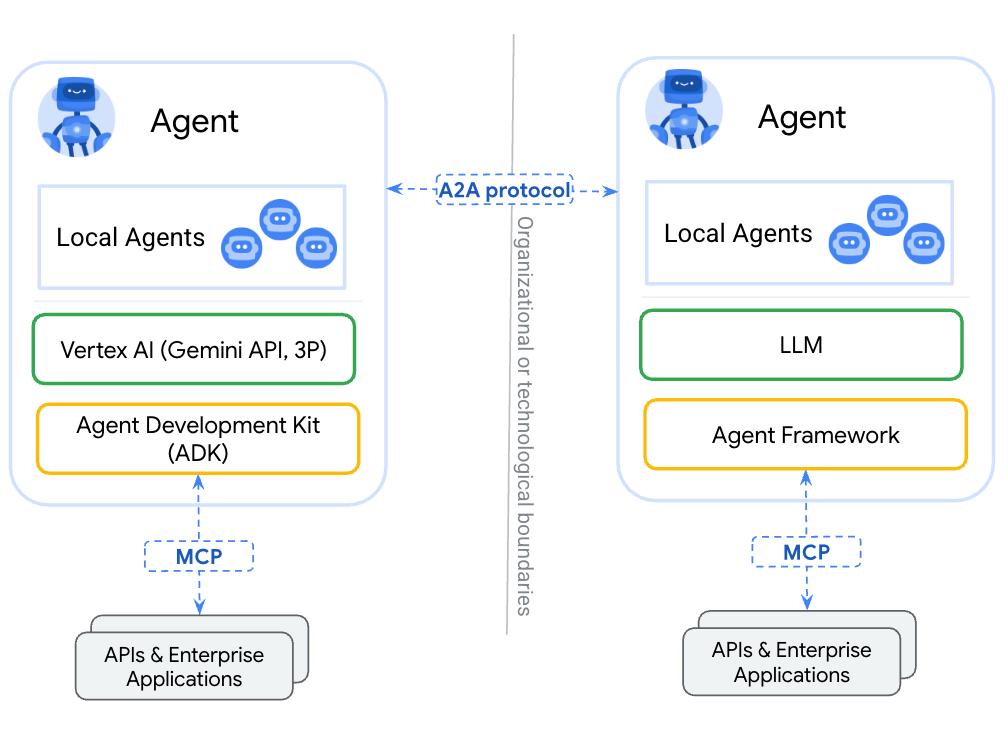Table of Contents
Overview
In the rapidly evolving world of Artificial Intelligence, the need for collaboration and interoperability between AI agents is becoming increasingly crucial. Enter A2A Protocol, an open standard designed to facilitate secure and structured communication between AI agents and frameworks. Initiated by Google in collaboration with over 50 partners, A2A Protocol aims to enhance inter-agent operability and foster collaboration in multi-agent ecosystems. Let’s dive into the details of this promising new standard.
Key Features
A2A Protocol boasts several key features that make it a compelling solution for AI developers and researchers:
- Open Interoperability Standard: A2A Protocol is built on open standards, ensuring that different AI agents can communicate regardless of their underlying framework.
- Secure Agent-to-Agent Communication: Security is paramount, and A2A Protocol provides a secure channel for agents to exchange messages and coordinate tasks.
- Complements MCP: Designed to work in tandem with the Model Context Protocol (MCP), A2A Protocol further enhances the ability to build complex AI systems.
- Backed by Google and Industry Partners: The protocol benefits from the support and expertise of Google and a wide range of industry partners.
- Designed for AI Frameworks: A2A Protocol is specifically designed to integrate seamlessly with various AI frameworks.
How It Works
A2A Protocol provides a protocol layer that acts as a bridge between different AI agents. Regardless of the framework an agent is built upon, it can use A2A Protocol to send messages, share goals, and coordinate tasks with other agents. This fosters seamless communication in multi-agent systems while ensuring security and traceability. Think of it as a universal translator for AI, allowing different agents to understand and work with each other effectively.
Use Cases
The potential applications of A2A Protocol are vast and varied. Here are a few key use cases:
- Coordinating Multi-Agent Systems: A2A Protocol enables the creation of complex systems where multiple AI agents work together to achieve a common goal.
- Cross-Framework AI Integration: Integrate AI agents built on different frameworks, allowing them to collaborate on tasks that require diverse skill sets.
- Enterprise Agent Architecture: Build robust and scalable enterprise AI solutions by leveraging A2A Protocol for agent communication and coordination.
- Research in AI Collaboration: Facilitate research into AI collaboration by providing a standardized platform for experimenting with multi-agent systems.
Pros & Cons
Like any technology, A2A Protocol has its strengths and weaknesses. Let’s take a look at the pros and cons.
Advantages
- Industry-Standard Alignment: A2A Protocol aligns with industry standards, promoting interoperability and reducing vendor lock-in.
- Enables Modular AI Systems: The protocol enables the creation of modular AI systems, making it easier to develop, maintain, and scale AI applications.
- Strong Backing: With backing from Google and numerous industry partners, A2A Protocol has a solid foundation for future development and adoption.
Disadvantages
- Early-Stage Adoption: As a relatively new protocol, A2A Protocol is still in the early stages of adoption, which may limit its immediate applicability in some contexts.
- Requires Adherence to Protocol Design: To benefit from A2A Protocol, developers must adhere to its design specifications, which may require some initial investment in learning and implementation.
How Does It Compare?
While A2A Protocol is a promising solution for AI agent communication, it’s important to consider its alternatives.
- LangChain Agents: LangChain Agents offer a higher level of abstraction but are not a protocol, making them less suitable for scenarios requiring strict interoperability.
- Open Agents: Open Agents provide flexibility but lack the standardization offered by A2A Protocol, which can lead to compatibility issues in complex multi-agent systems.
A2A Protocol distinguishes itself by being a standardized protocol focused on secure, structured communication.
Final Thoughts
A2A Protocol represents a significant step forward in the quest for interoperable and collaborative AI systems. While still in its early stages, its strong backing, industry-standard alignment, and focus on security make it a promising technology for the future of AI. As adoption grows and the protocol matures, we can expect to see A2A Protocol playing an increasingly important role in the development of complex and intelligent AI applications.
